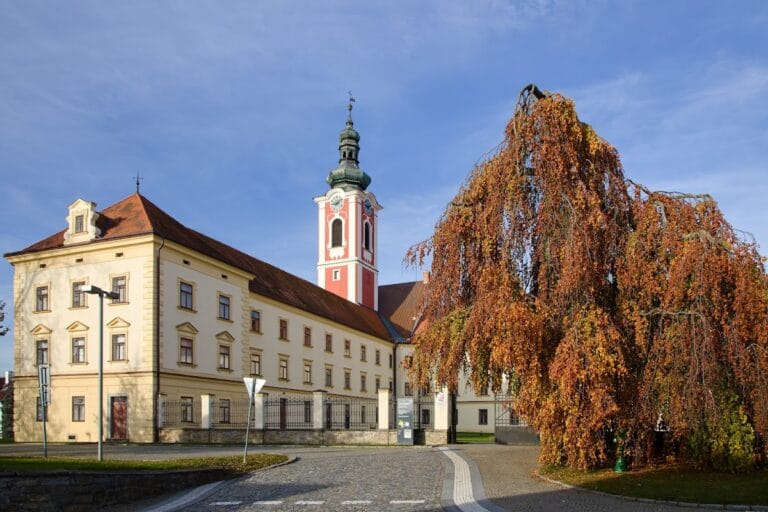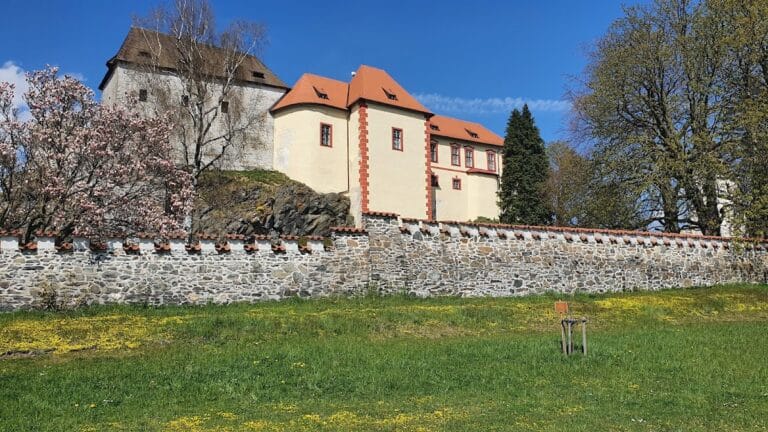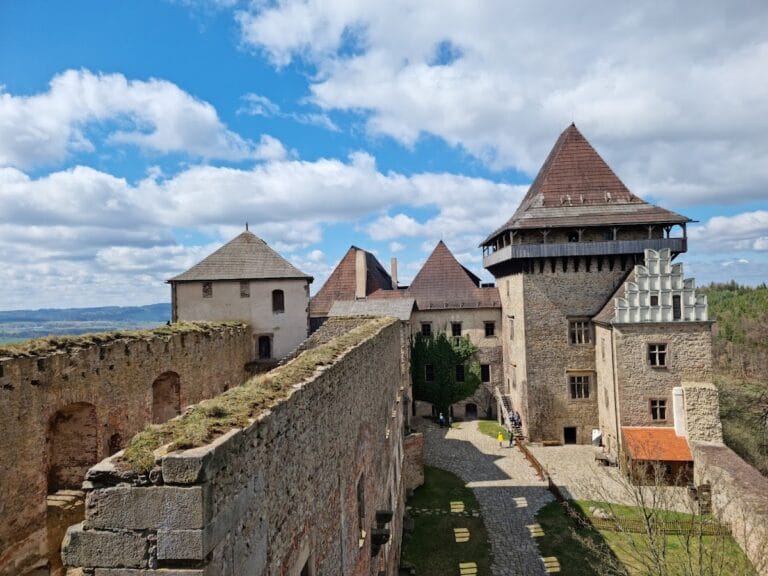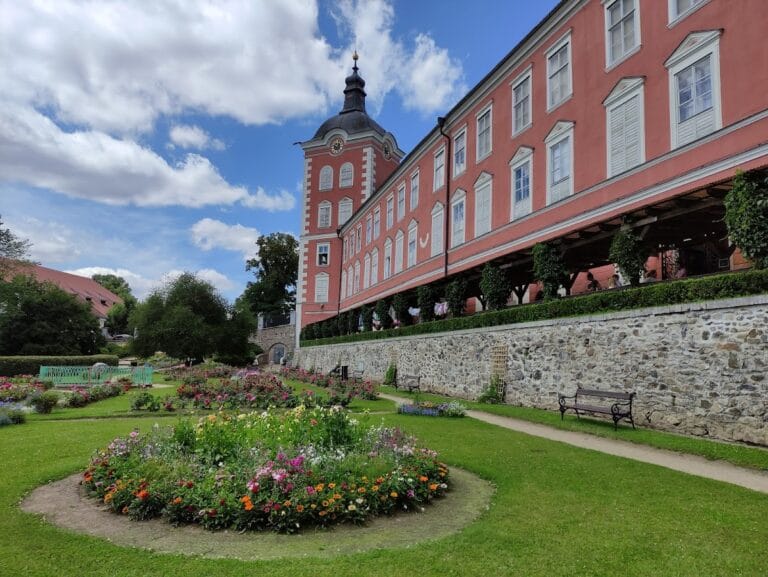Castle Červená Řečice: A Historic Fortress and Chateau in the Czech Republic
Visitor Information
Google Rating: 4.6
Popularity: Low
Google Maps: View on Google Maps
Official Website: www.cervenarecice.cz
Country: Czechia
Civilization: Medieval European
Remains: Military
History
Castle Červená Řečice stands in the municipality of Červená Řečice in the present-day Czech Republic. Its origins trace back to the medieval period, built by Christian ecclesiastical authorities from Prague.
Beginning in the 12th century, the estate belonged to the bishops of Prague, who constructed a fortress here during the latter half of the 13th century. Bishop Tobiáš of Bechyně reinforced both the fortress and a nearby church to defend against attacks led by Otto of Brandenburg and the local Vítkovci noble family. These early fortifications served primarily military and protective functions within the volatile regional context of the time.
In the early 1300s, the fortress underwent a significant transformation under Archbishop Arnošt of Pardubice. It was rebuilt as a Gothic castle, reflecting both defensive needs and the administrative role it came to serve for the estate. This period also saw notable residents such as Archbishop Jan of Jenštejn, who stayed at the castle alongside his court in the years 1384 and 1392. The castle operated as a seat of ecclesiastical authority and an estate center during this time.
The 15th and 16th centuries brought several changes in ownership and conflict. Prominent owners included Jan Svídnický of Chotěmic, Mikuláš Sokol of Lamberk, the noble Trčka family, and the Leskovec family. The castle’s history during this era interwove with regional conflicts such as the Hussite Wars and resisted pressures from King George of Poděbrady. Throughout these decades, the castle served both military defensive functions and noble residency.
By the 1560s, Šebestián Leskovec initiated a transformation of the medieval Gothic fortress into a Renaissance chateau, updating its appearance and function. Successive owners continued these enhancements until the end of the 16th century. In 1597, ownership transferred to Heřman of Říčany but was soon disrupted when the estate was confiscated after the Battle of White Mountain, a decisive event in Czech history marking the start of Habsburg dominance. In 1623, the castle passed to Archbishop Arnošt Vojtěch of Harrach.
During the turbulent Thirty Years’ War, the castle provided shelter and was maintained through periods of siege and unrest. Further repairs and improvements were made under Archbishop Matouš Ferdinand Sobek of Bílenberk. The final major renovations before the 20th century’s nationalization occurred during the tenures of František Kordač and Karel Kašpar.
In recent history, since 2011, Castle Červená Řečice has been privately owned, with extensive restoration efforts to preserve its structure. A fire in May 2014 damaged only the roof of a northern turret, and the fire was quickly controlled. The castle holds status as a cultural monument since 1963 and was elevated to national cultural monument status in 2014.
Remains
Castle Červená Řečice features a distinctive hexagonal ground plan encompassing two enclosed courtyards. The complex is fortified with polygonal bastions, a design providing angular defensive positions, and is encircled by a water-filled moat supported on the outer side by a high earthen rampart. This combination illustrates an evolution from medieval fortification techniques to later Renaissance military architecture.
Around the first courtyard stand two-story wings, including a prominent prism-shaped Clock Tower projecting from the south. The oldest structural element is the central wing, which extends eastward to connect with a circular defensive structure known as the Watchtower or Hláska. This round tower likely served an observation and signal function within the complex’s defenses.
Passing into the second courtyard involves moving through a passage beneath a corridor that links the wings. This corridor’s exterior was decorated with Renaissance sgraffito—a technique involving layers of plaster scratched to reveal patterns beneath—though this decoration experienced damage during the twentieth century.
On the western side of the second courtyard lie the remains of a substantial granary flanked by two two-story bastions dating from the Renaissance period. These bastions supplemented the curtain wall, providing additional defensive positions. Another protruding bastion on the southern side is known as the Hunger Tower or Hladomorna, suggesting its use as a prison or detention space.
Surrounding the entire castle is the moat, notable for its water coverage and the presence of ancient trees within, combining natural and man-made protective elements. While once adjoining an English-style park, this landscaped area has since been reclaimed by secondary vegetation, altering the immediate surroundings.
A 2014 fire affected only the roof of a northern turret, with no damage extending into the main structural fabric. The prompt extinguishing limited harm to the uppermost wooden elements.
Castle Červená Řečice occupies a central location within its town, closely bordered by roads and cycling routes, with public transport stops situated just beyond the gateway. The spatial arrangement and substantial fortifications testify to its historic role as both a defensive stronghold and an administrative residence over many centuries.










